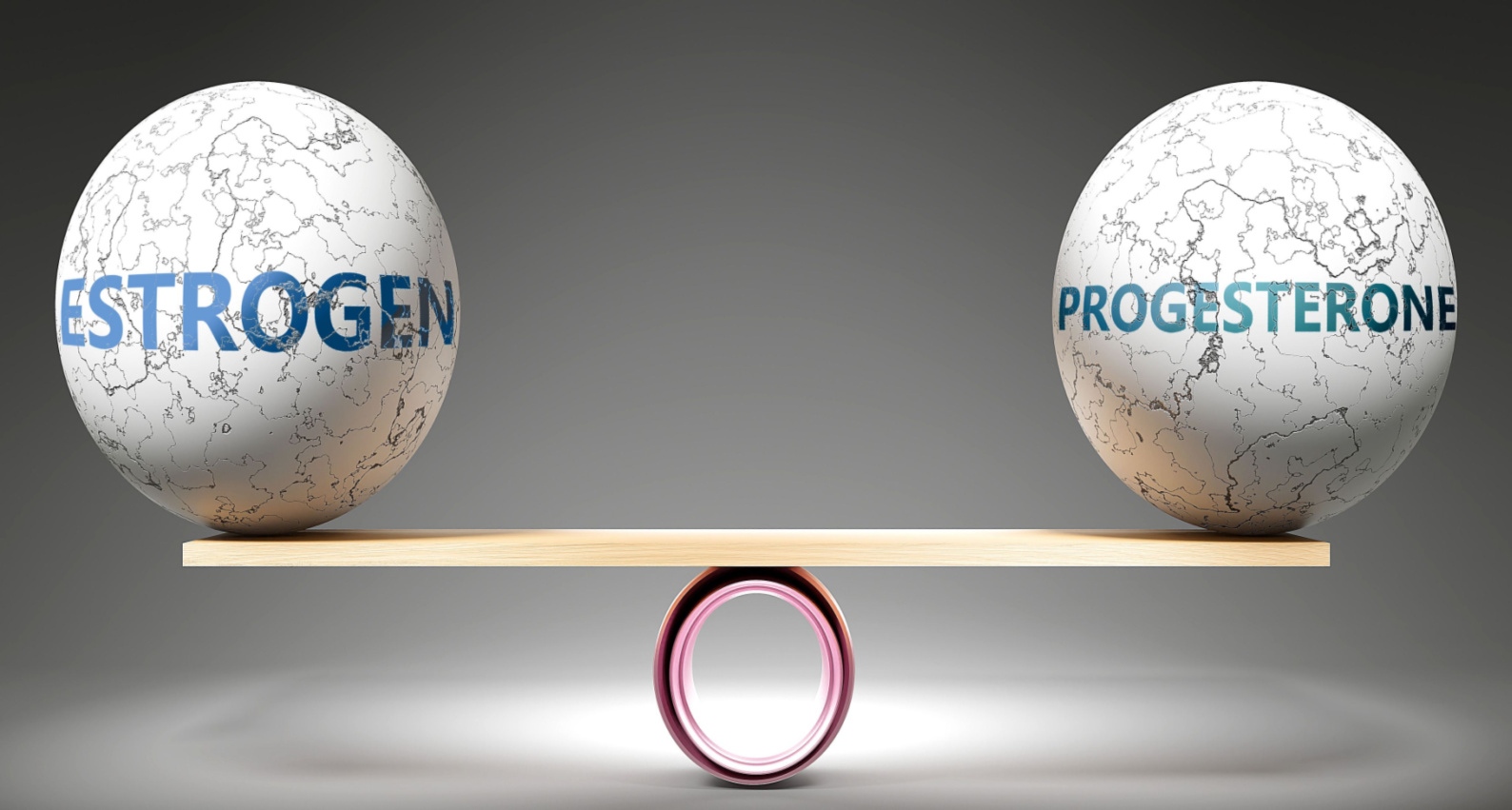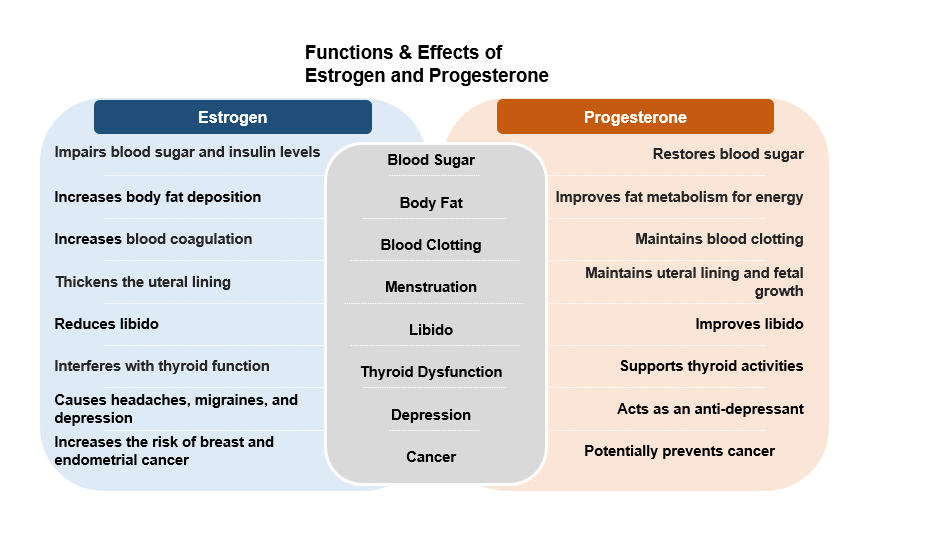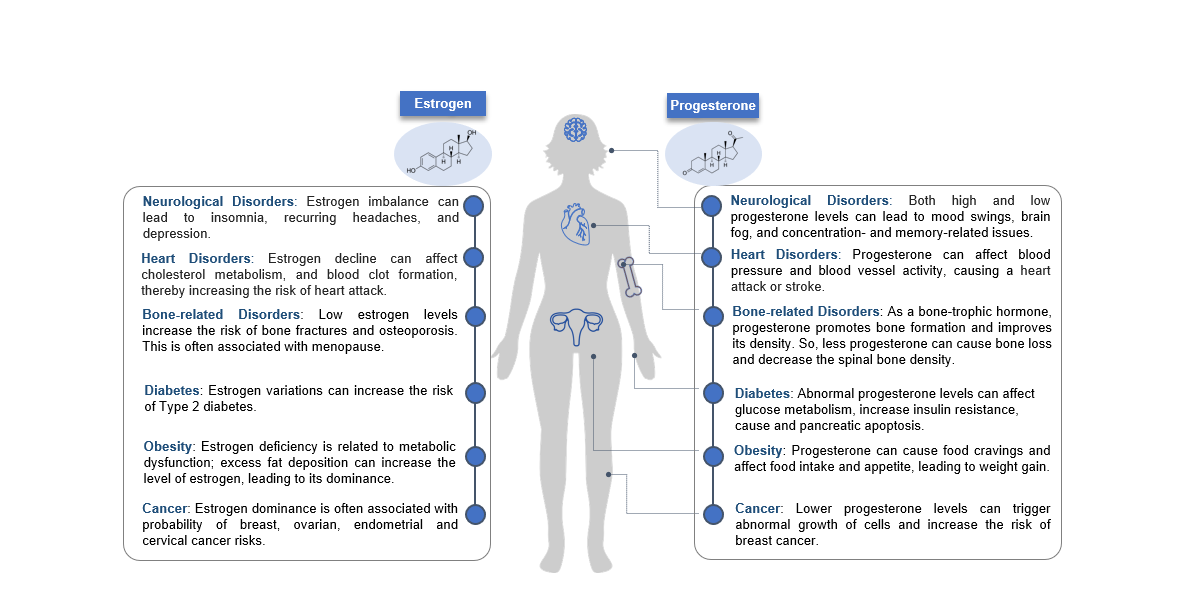Balancing Act of Estrogen and Progesterone – How Can Technology Help?
Published on 18 Aug, 2022

In women, estrogen and progesterone play opposite roles and influence every pivotal aspect of their life cycle, from puberty, menstruation, pregnancy, and childbirth to menopause. Moreover, these hormones also play a vital role in regulating bone health, body weight, cardiovascular and cognitive functions, and metabolism of glucose and cholesterol. Their imbalance (estrogen dominance or progesterone degradation) can often lead to serious health issues such as cancer. Thus, monitoring and maintaining their levels is crucial. Compared to traditional blood-based methods, the new non-invasive methods available in the market enable easy detection of hormone imbalances at home.
What are Estrogen and Progesterone?
Estrogen and progesterone are steroid hormones essential for proper development of a female body. They are present in males as well. The natural shift in estrogen and progesterone levels mainly occurs due to chronic life stress, poor diet, obesity, unhealthy lifestyle, aging, usage of cosmetic products, and buildup of environmental toxins such as heavy metals, industrial byproducts, pesticides, and BPA in the body. Estrogen dominance over a prolonged period can increase the risk of endometriosis, miscarriage, PMS, fibroids or cysts, cancers (breast, uterine, and cervical), irregular menstruation, infertility, insulin resistance, etc. In harmony, progesterone balances out the estrogen effects and maintains essential bodily functions. Maintaining a healthy progesterone-to-estradiol ratio of 100–500 is crucial to keeping the functions on track and reducing cancer risks.

Estrogen appears in different forms such as estrone (a weaker form of estrogen commonly found in women after menopause), estradiol (a gender-neutral estrogen commonly found in women during their reproductive years), and estriol (peaks in pregnancy as it prepares the body for baby delivery) with individual functions. Estradiol levels are present and are crucial in men too for sexual development and fertility. Their imbalance can act as a risk factor for cancer and diabetes.
Why is Their Balance Critical?
At the right levels, estrogen and progesterone complement each other very well across all functions; however, their imbalance can negatively impact the functions. In layman’s terms: “estrogen helps the grass grow high and progesterone cuts and maintains the grass, preventing the lawn from going out of control.” Estrogen prepares the body before ovulation and fertilization with the help of follicular stimulating hormone (FSH), while progesterone maintains pregnancy in the uterus and fetal development after fertilization with the help of luteinizing hormone (LH).
Production of inappropriate amounts of progesterone by the body causes a condition called unopposed estrogen, also known as estrogen dominance. It makes estrogen work overtime and leads to the overgrowth of cells (e.g., tumors) in the uterine lining. The risks associated with the imbalance can be prevented by managing stress, following a vitamin- and zinc-rich diet and a healthy lifestyle, undergoing hormonal replacement therapies, etc.

How can Imbalance be Prevented?
Estrogen–progesterone imbalance could be prevented through:
- Constant or periodic monitoring
- Medication
- Adjuvant therapies (Yoga, meditation, balanced diet, stress buster exercises, healthy lifestyle)
Who Invests in Estrogen and Progesterone Monitoring?
Estrogen and progesterone levels rise and fall throughout a woman’s life, and accordingly, their threshold changes. However, the hormones should be produced and maintained in the right amount for the proper functioning of the body. Several at-home tests which help detect their levels accurately at a fast pace are available in the market, including minimally invasive technological solutions, as given below.
- Clearblue® Fertility Monitor, a commercial device launched recently, features a touch screen monitor and can predict ovulation and track and store the daily fertility status. Clearblue Advanced Digital Ovulation Test (urine-based) can monitor the fertile window of the menstrual cycle and track the levels of two key fertility hormones: estrogen (E3G) and LH.
- Inito Fertility Monitor works well with irregular cycle variations and provides accurate measures of LH and estrogen. Their smartphone-connected platform allows users to test for diabetes, cholesterol, vitamins, infections, STDs, etc. on a single device.
- While most ovulation test kits measure LH levels, Mira’s Fertility Kit and Ovulation Tracker measure the levels of E3G (the urinary metabolite of estrogen) and LH. The digital fertility analyzer provides the exact hormone concentration (instead of qualitative test color change).
- Another urine-based predict-and-confirm kit developed by Proov detects pregnanediol glucuronide (PdG), the urine metabolite of progesterone, along with LH.
- Saliva-based estradiol enzymatic immunoassays developed by Salimetrics help research and biomedical laboratories standardize the detection of fluctuating estradiol levels.
- Others include:
- LetsGetChecked at-home progesterone test checks progesterone levels in the blood on the 21st day of the menstrual cycle and predicts ovulation.
- Everlywell at-home women’s health test features a comprehensive panel to monitor the key female hormones – estradiol, progesterone, LH, FSH, DHEA, Cortisol, testosterone, and thyroid hormones – using saliva and blood.
- Rocky Mountain Analytical provides a convenient salivary hormone test, One Day Hormone Check, to measure the unbound, bioavailable hormone (estradiol, progesterone, and progesterone/estradiol ratio) levels and their shifts in both men and women.
- myLAB Box tests measure FSH, estradiol, and progesterone levels for perimenopause screening using saliva and blood, helping ensure fertility.
- Modern Fertility also provides at-home test options for tracking ovulation, fertility, and pregnancy.
- Saliva-based tests for measuring the free estrogen and progesterone levels by Cerascreen® and Walk-In-Lab give an account of deficiency or dominance of estrogen and progesterone.
Conclusion
Estrogen and progesterone are vital hormones balancing each other. Numerous new-age technologies have been developed to monitor their levels, and thereby, detect their deficiency or excess. This, in turn, can help diagnose a variety of conditions caused by these hormones’ imbalance, as well as track women’s ovulation and fertility, and the fetus and placenta’s health status during pregnancy. Estrogen testing is also performed for men in case of any abnormal puberty-related issues.

